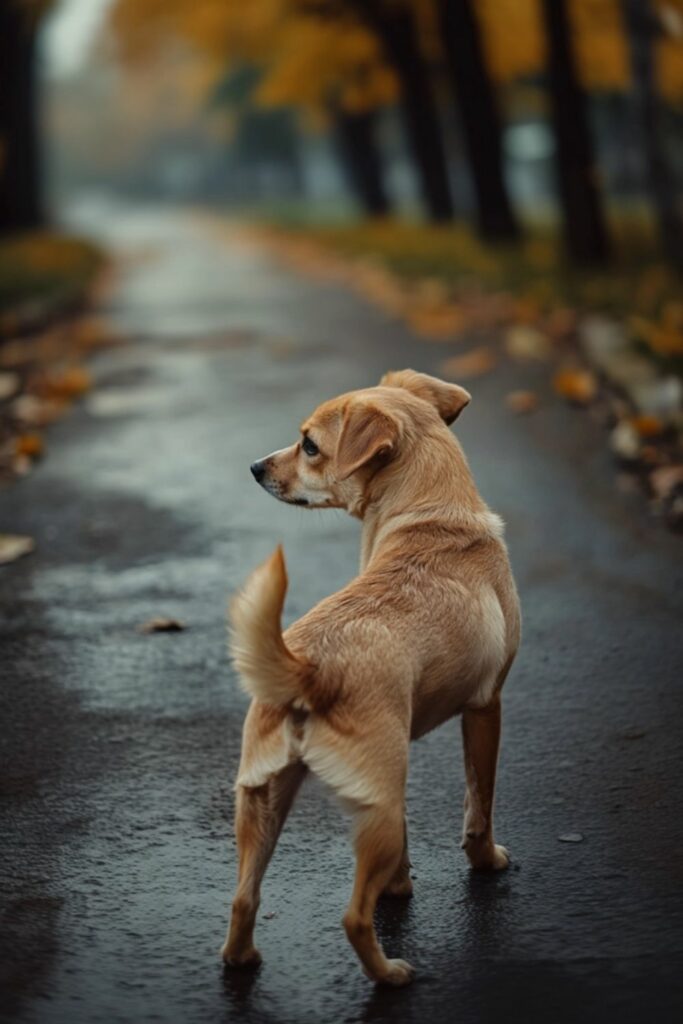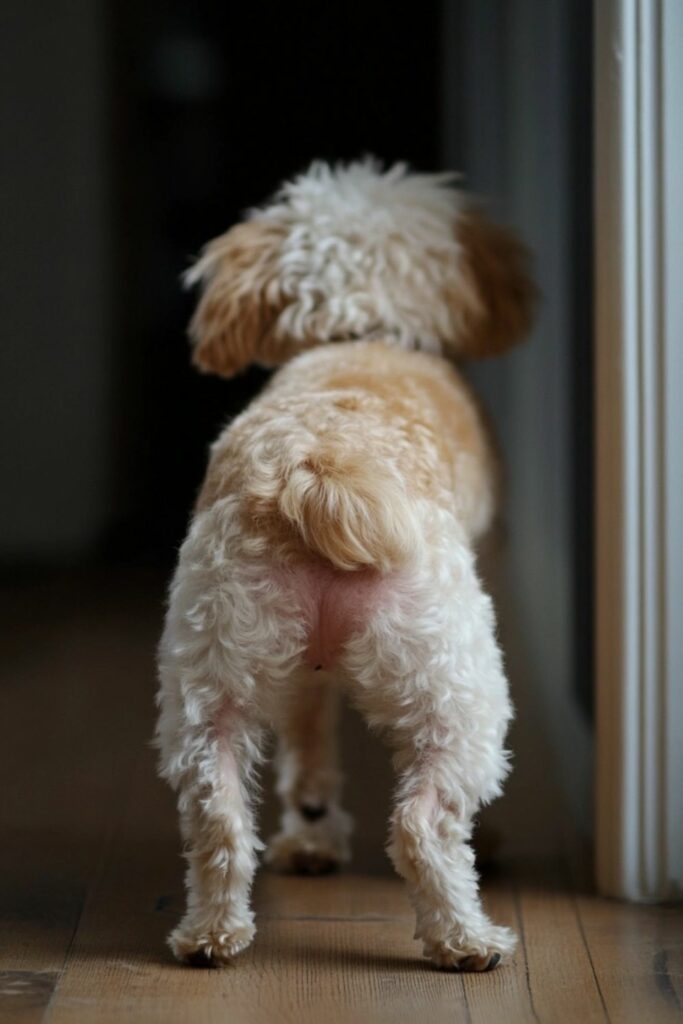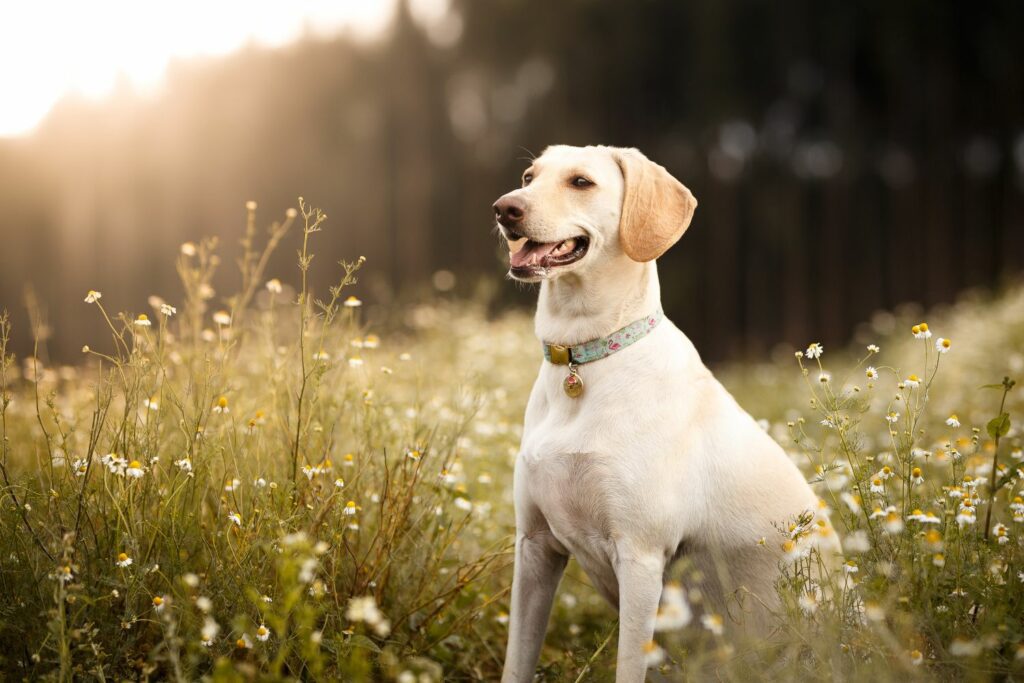Understanding Anal Gland Issues in Dogs
 Cecilie Hemsen Berg
Cecilie Hemsen Berg
If you’ve ever noticed your dog scooting across the floor or paying extra attention to their rear end, you might be witnessing signs of anal gland issues. While it’s not the most pleasant topic, understanding this common problem is essential for maintaining your dog’s comfort and health. In this blog we will cover everything you need to know about anal glands: their function, why they can become problematic, signs of issues, and how to treat and prevent them.

What Are Anal Glands?
Anal glands, also known as sacs, are two small structures located on either side of your dog’s anus. These glands secrete a distinct-smelling fluid that is typically released during defecation. For most dogs, this process happens seamlessly, and you may never even notice the glands. However, when issues arise, they can lead to discomfort or even health problems.
There are a few theories regarding the purpose of anal glands. The fluid is unique to each dog, and serves as a territorial marker, conveying information to other dogs about sex, health, and age. Others suggest that the fluid may act as a lubricant, assisting dogs in passing hard stools.
Most dogs can go through life without any problems with their anal glands. However, if these glands become full, impacted, or infected, we need to contact the vet immediately.

Common Anal Gland Issues
- Impaction: One of the most frequent problems with anal glands is impaction, where the fluid becomes too thick to be expelled naturally. This leads to a buildup that can be painful for your dog and, if left untreated, may lead to inflammation.
- Infection: When impacted glands are left untreated, they can become infected, leading to more serious complications (also called anal sacculitis). This can cause pain, swelling, and even abscesses that may require drainage by a veterinarian.
- Rupture: In severe cases, untreated infections can lead to a rupture of the anal glands. This is both painful and potentially dangerous, requiring immediate veterinary attention.
Another issue that can affect the anal glands
Anal sac adenocarcinoma: A serious type of cancer affecting the anal glands. It is not very common, and the symptoms can be subtle or obvious. You might notice swelling or a growth around the perianal area, or see your dog straining while defecating, with changes in stool appearance. However, it’s also possible that the tumour will go unnoticed until a routine rectal exam by your veterinarian reveals it.
Signs of Anal Gland Problems
The following signs may indicate that your dog is experiencing issues with their anal glands:
- Scooting: If your dog is dragging their bottom on the floor, it could be an attempt to relieve pressure or irritation. This is one of the most common signs.
- Licking or Biting: Persistent licking or biting around the anus or the base of their tail may indicate discomfort.
- Swelling or Redness: Visible swelling or redness around the anus could be a sign of inflammation or infection.
- Foul Odour: A strong, fishy smell coming from your dog’s rear is often a sign that the anal glands are not functioning properly.
- Difficulty Defecating: If your dog seems to be straining or uncomfortable while defecating, it could be linked to their anal glands.
Causes of Anal Gland Issues
Several factors can contribute to anal gland problems in dogs but some of the most common causes are covered here:

- Poor bowel movements: Constipation or chronic soft stool/diarrhoea can prevent proper anal gland emptying, leading to a buildup of fluid. A diet that provides fibre is important for healthy gut and bowel movement.
- Obesity: Overweight dogs may experience pressure on their glands due to excess fat around the anus, making it harder for them to empty naturally.
- Allergic dermatitis or Atopic dermatitis: Food and environmental allergens can trigger an allergic reaction in your pet’s anal glands. This occurs when food allergens are digested or when environmental allergens like grass, dust, and dander contact the skin around the tail or bottom.
- Breed Predisposition and Genetics: Smaller breeds, such as Chihuahuas, Dachshunds, and Toy Poodles, are more prone to anal gland issues than larger breeds.
- Lack of Exercise: Regular activity helps with natural bodily functions, including the emptying of anal glands.
Other possible causes of Anal Gland Problems
- Stress: Low-grade stress slows digestion and can harm gut bacteria, affecting overall gut health.
- Enzymes & Bacteria: Healthy digestive enzymes and good gut bacteria are vital for bowel function, preventing bacterial overgrowth and yeast infections.
- Immunity: Food allergies or intolerances affect digestion and can lead to anal gland issues; eliminating triggers and boosting immunity helps.
- Neurological: Magnesium is crucial for nervous system function, especially the gut-brain connection. Deficiency can slow digestion and impact anal gland health.
- Hormones & Constipation: Low oestrogen in neutered female dogs can cause constipation due to oestrogen receptors in the gut.
- Thyroid Hormones: Low thyroid hormones can also slow digestion and lead to constipation, affecting anal sac emptying.
Treatment Options for Blocked Anal Glands
- Manual Expression: This is a common treatment where a veterinarian (or a trained groomer) manually empties the glands. Some pet owners may choose to learn this technique, but it is generally safer to have a professional handle it to avoid injuries.
- Antibiotics: If the glands are infected, your vet may prescribe antibiotics to clear up the infection and prevent further complications.
- Flushing or Lancing Abscesses: In more severe cases where an abscess has formed, the vet may need to flush the glands or lance the abscess to drain the infection.
- Surgery: The general advice is NOT to remove the anal glands unless it is a severe condition (eg cancer). Removing the anal glands can disrupt the function of the anal sphincter and interfere with the body’s ability to cleanse and expel poop. Always seek a second opinion.

How often should you empty the anal sacs?
For dogs without anal sac issues, you typically don’t need to empty them, as they do it naturally. However, dogs with full or problematic anal sacs should have them emptied every three months. It’s best to consult your vet, who may also recommend dietary changes and increased exercise to help improve the condition.
Tips to Prevent Anal Gland Issues
Although certain breeds or factors may make some dogs more susceptible to anal gland issues, there are proactive steps you can take to help minimise the risk:
- Watch for Signs: Watch for signs of anal gland discomfort, such as scooting or excessive licking, and consult your vet if you notice anything unusual. Early detection can prevent more severe issues.
- Maintain a Healthy Diet: A diet rich in fibre helps produce firmer stools, which in turn aids in natural gland expression. Adding ingredients like pumpkin, sweet potato, or fibre supplements can help keep your dog’s stools firm.
- Regular Exercise: Keeping your dog active encourages healthy digestion and bowel movements, which can help the anal glands function normally. It will also keep your dog at a healthy weight and prevent obesity, which is a risk factor for anal gland problems.
- Healthy Weight: Maintaining a healthy weight reduces the risk of pressure on the glands, making it easier for them to empty naturally.
- Grooming and Hygiene: Regular grooming and keeping the area around your dog’s rear clean can help prevent infections and blockages.
- Routine Vet Visits: Regular check-ups can help identify any anal gland problems before they become serious. If your dog is prone to issues, your vet may recommend periodic manual expression.

Nature’s Pharmacy – Home Remedies
While inflamed anal glands should always be examined by a vet, there are a few natural remedies you can try at home to help soothe discomfort in the meantime. These simple treatments can provide temporary relief while you arrange for professional care.
- Soothing Compress: Applying a warm compress can help reduce inflammation and ease discomfort. Try soaking a clean cloth in chamomile tea, known for its calming and anti-inflammatory properties, or in a solution of Epsom salt and warm water. Hold the compress against the affected area for a few minutes, repeating as needed to help soothe the glands.
- CBD Oil: For natural pain relief, you can apply a drop of CBD oil directly onto the affected area. CBD oil has anti-inflammatory properties and can help reduce pain and swelling in the area, providing your dog with some comfort until the vet visit.
- Colloidal Silver Cream or Gel: Another excellent remedy for inflamed anal glands is colloidal silver, known for its antibacterial and healing properties. Colloidal silver’s ability to destroy germs and bacteria can make it effective in treating minor skin infections. Apply a small amount of colloidal silver cream or gel to the area to help alleviate inflammation and promote healing.
- Aloe Vera Gel: Aloe vera is well-known for its cooling and healing properties. Applying a small amount of pure aloe vera gel directly to the inflamed area can help reduce irritation and provide relief. Make sure to use pure aloe vera without added chemicals or fragrances.
While these remedies may help manage mild discomfort, they should never replace a proper vet consultation. Regular check-ups and a balanced diet are essential for keeping your dog’s anal glands healthy.
How Nala Health Addresses the Issue
A healthy gut is essential not only for your dog’s overall well-being but also for maintaining healthy anal glands. Our recipes are rich in fibre, sourced from gluten-free ancient grains and vegetables, as well as chitin (a type of fibre found in insect exoskeletons). If your dog’s diet is high in animal meat, it may be lacking sufficient fibre, as meat does not contain fibre. Here are some gut-friendly ingredients you’ll find in Nala Health dog food:
- Chicory root
- Butyrate
- Probiotics
- Millet, sorghum (and oats, which we’ve added to our senior formula)
- Sweet potato, carrots, baobab fruit, rooibos
- Alfalfa/lucerne
These ingredients not only support your dog’s digestion but also contribute to overall health and well-being.

The Bottom Line
Healthy anal glands are often overlooked but play an essential role in your dog’s comfort and health. By understanding the causes, signs, and treatment of anal gland issues, you can take proactive steps to keep your dog happy and healthy. Remember, if you notice any signs of discomfort or suspect your dog may have an anal gland problem, it’s always best to consult with your vet for proper diagnosis and care.
Preventative measures like a fibre-rich diet, regular exercise, and routine vet visits are simple ways to avoid these problems before they start, ensuring your dog’s tail keeps wagging for years to come!

